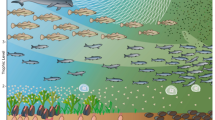Abstract
Land, Sea and Human Effort was the central theme of the 28th IGU Congress in The Hague, The Netherlands. This volume contains the key-note addresses highlighting this central theme. Three major issues regarding low-land coasts came to the fore: land-use, environmental quality and safeguarding of the land. An interesting question is whether the concentration of human activities in large urban nodes will continue, or that such nodes and hierarchies will no longer structure our world, because of the ever-increasing importance of all means of communication and transport, as indicated by Johnston. Functions may disperse to specialised environments. A similar specialisation may be encountered in e.g. the development of tourism in the coastal zone. As Gormsen has elucidated, tourism has over time extended in a sequence of spatial ‘peripheries’. Consequently, phases in development may be identified with a growing impact and participation of local tourism interwoven with international growth. The environmental quality of coastal zones is seriously under threat, due to ever-increasing population pressure and human exploitation. The major problems are pollution and the availability of good quality water. Oudshoorn explored the world’s resources of drinking water, indicating the great need for political awareness of this huge problem. Cross-sectoral planning is advocated by Oudshoorn, even if water management often trespasses international boundaries and the harmonisation of the planning strategies is mostly difficult. The environmental quality of the coastal zone is also affected by the exploitation of oil and gas resources. Odell demonstrates that the conditions for this exploitation in the North Sea are unique, especially because of the great impact of an international agreement on offshore exploitation. Planning in sea areas is becoming an issue of increasing importance as it has to cope with the many, often conflicting interests, such as shipping, fishery, mining, waste disposal in relation to environmental and ecological constraints. The safeguarding of the land against river floods and sea side storm surges under the threat of a rising sea level is another important issue in coastal low-lands. Callander reviews the present state of human influence on climatic change and the associated sea level change. As indicated by Hesselman et al. new remote sensing and associated GIS techniques have recently been developed which are a great contribution in determining the fate of the coastal zones with respect to the threats induced by natural and human activities.
Similar content being viewed by others
References
Del Rio Luelmo, J.: Water and regional conflict: Turkey's ‘peace pipeline’. European and Regional Studies 3(1), 67–74 (1996).
Dijkink, G. J.: National Identity and Geopolitical Visions. Routledge, London 1996.
Gottmann, J.: The Significance of Territory. University Press of Virginia, Charlottesville 1973.
Holt-Jensen, A.: The sharing of petroleum resources; resource poverty and richness around the North European Seas with special reference to the Norwegian position. GeoJournal 39(2), 211–219 (1996).
IPCC, Response Strategies Working Group: Strategies for Adaptation to Sea Level Rise. IPCC Report, The Hague 1990.
IPCC, Response Strategies Working Group: Global Climate Change and the Rising Challenge of the Sea. IPCC Report, The Hague 1992.
IPCC World Coast Conference: Preparing to Meet the Coastal Challenges of the 21st Century. IPCC Conference Report, The Hague 1994.
Kliot, N. S.: Water Resources and Conflict in the Middle East. Routledge, London 1994.
Kreukels, A.; Wever, E.: Dealing with competition: the port of Rotterdam. TESG 87(4), 293–309 (1996).
Lowi, M. R.: Water and Power; the Politics of a Scarce Resource in the Jordan River Basin. Cambridge University Press 1996.
Lucas, A. E.: Data for coastal GIS: issues and implications for management. GeoJournal 39(2): 133–142 (1996).
Micklin, P. P.: Man and the water cycle: challenges for the 21st century. GeoJournal 39(3), 285–298 (1996).
Ministry of Planning and Environment: Second National Environmental Policy Plan. The Hague 1991.
North Sea Atlas (in Dutch) (ICONA): Stadsuitgeverij, Amsterdam 1992.
Painter, J.: Politics, Geography and Political Geography. Arnold, London 1995.
Pernetta, J. C.; Milliman, J. D. (eds): Land-ocean Interactions in the Coastal Zone. IGBP, Stockholm 1995.
Rosenne, S.: Geography in international maritime boundary-making. Political Geography 15(3/4), 319–334 (1996).
Taylor, P. J.: Political Geography: World-economy, Nation-state and Locality, 3rd ed. Longman, Harlow 1993.
Tromp, D.; Zevenboom, W.; Stolk, A.: The international waters. Journal of Coastal Conservation (1997, forthcoming).
Author information
Authors and Affiliations
Rights and permissions
About this article
Cite this article
Terwindt, J.H.J., Groenendijk, J.G. Land, sea and human effort: technical achievement and territorial engagement. GeoJournal 42, 1–7 (1997). https://doi.org/10.1023/A:1006896706520
Issue Date:
DOI: https://doi.org/10.1023/A:1006896706520




